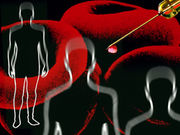Know the signs of extreme response to infection; consider it a medical emergency
WEDNESDAY, Aug. 24, 2016 (HealthDay News) — Many cases of life-threatening sepsis could be recognized and treated long before they cause severe illness or death, according to an Aug. 23 Vital Signs report from the U.S. Centers for Disease Control and Prevention.
Researchers from the CDC found that about 70 percent of patients with sepsis had used health care services recently or had chronic diseases that required regular medical care.
Health care providers play a critical role in preventing sepsis, which includes following infection control measures such as hand washing and by ensuring patients get recommended vaccines, the CDC said. It’s also essential to educate patients and their families about the need to prevent infections, manage chronic health conditions, and seek immediate medical care if an infection doesn’t improve.
The CDC had additional advice for health care providers: Know the signs and symptoms of sepsis. If sepsis is suspected, order tests to determine if an infection is present, where it is, and what caused it. Start antibiotics and other recommended medical care immediately. Also, monitor patients closely and reassess antibiotic treatment within 24 to 48 hours or sooner to determine whether the type of antibiotics, dose, and duration are correct, or need to be changed.
Copyright © 2016 HealthDay. All rights reserved.








